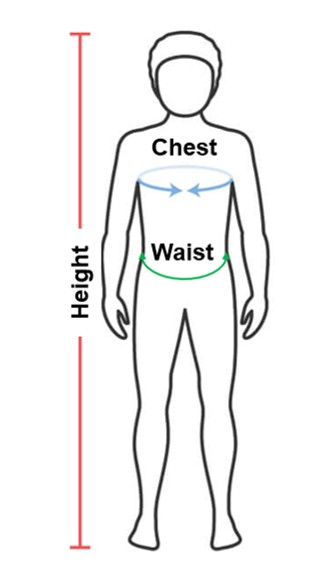Kids T-Shirt Size Chart
| Youth Unisex Sizes | XS | S | M | L | XL | |
|---|---|---|---|---|---|---|
| Age | 3 - 5 | 5 - 7 | 7 - 9 | 9 - 11 | 11 - 13 | |
| Height (inches) | 39 - 44 | 45 - 49 | 50 - 53 | 53 - 58 | 58 - 61 | |
| Weight (pounds) | 33 - 42 | 43 - 57 | 50 - 67 | 68 - 87 | 88 - 107 | |
| Chest (inches) | 22 - 24 | 24 - 25.5 | 25.5 - 27.5 | 27.5 - 30.5 | 30.5 - 32.5 | |
| Waist (inches) | 22 - 23 | 23 - 24.5 | 24.5 - 25.5 | 25.5 - 28 | 28 - 30.5 | |
| Kids Shirt Size Chart Maker : iSizeChart.com | ||||||
| Toddler Unisex Sizes | 2T | 3T | 4T | 5T |
|---|---|---|---|---|
| Height (inches) | 34 - 35 | 36 - 38 | 39 - 41 | 42 - 44 |
| Weight (pounds) | 25 - 28 | 29 - 32 | 33 - 36 | 36 - 40 |
| Chest (inches) | 20.5 | 21 | 22 | 23 |
| Waist (inches) | 21 | 21.5 | 22 | 23 |
| Kids Shirt Size Chart Maker : iSizeChart.com | ||||
About Kids T-Shirt Size Guide Chart
What should kids pay attention to when choosing shirts?
When choosing shirts for kids, comfort, safety, durability, and ease of movement are key priorities. Here’s a detailed guide to help parents select the best shirts for kids based on age, activity level, and season:
1. Fabric & Material.
Organic Cotton: Chemical-free, best for babies and eczema-prone kids.
Jersey Knit: Stretchy and comfortable for active kids.
Polyester Blends: Wrinkle-resistant and durable (good for school uniforms).
Avoid: Scratchy wool, stiff synthetics, or fabrics that trap heat.
For Babies (0–2 years): Opt for tagless, seamless shirts to prevent irritation.
2. Fit & Comfort.
Neckline: Wide or stretchy openings (avoid tight crew necks for babies).
Sleeves: Raglan sleeves (easier to put on) or adjustable cuffs for toddlers.
Length: Covers the waist but isn’t too long (to avoid tripping hazards).
For Active Kids: Choose athletic-fit shirts with moisture-wicking fabric.
3. Safety & Practicality.
Snap Buttons (for infants): Easier than pullover styles for diaper changes.
Flame-Resistant Fabric (for pajamas): Required for kids’ sleepwear in many regions.
Non-Toxic Dyes: Look for OEKO-TEX® certified fabrics.
4. Seasonal Considerations.
Winter: Long sleeves, thermal fabrics, or layered henleys.
Rainy/Cool Weather: Quick-dry polyester or fleece-lined shirts.
5. Easy Care & Durability.
Stain-Resistant: Darker colors or patterns hide spills.
Reinforced Seams: Prevents tearing during play.
Tip: Buy multiple identical shirts if your child has a favorite (to avoid meltdowns!).
6. Style & Kid-Friendly Features.
Reversible Shirts: Doubles wardrobe options.
UV Protection: Look for UPF 50+ for outdoor play.
For School: Follow dress codes (e.g., polo shirts or solid colors).
7. Age-Specific Tips.
Toddlers (1–3 years): Stretchy pullovers with simple designs.
Kids (4–12 years): Let them choose colors/patterns to foster independence.
